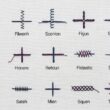As technology continues to evolve at an unprecedented pace, it’s easy to get caught up in the latest advancements and forget about the benefits of older technologies. Digital and analog technologies have their own unique advantages, and it’s important to explore both sides to make informed decisions. In this blog post, we will delve into the digital vs analog debate and explore the pros of each technology.
Pros of Digital Technologies
More Efficient and Convenient
Among the various advantages of digital technologies, perhaps the most prominent are their efficiency and convenience. Digital technologies have made tasks quicker, easier, and more efficient than ever before. The use of digital technologies has eliminated the need for manual labor, thereby increasing productivity and reducing time spent on repetitive tasks.
Additionally, digital technologies have made it possible to complete tasks remotely, facilitating convenience and flexibility in both personal and professional realms. These benefits have resulted in significant improvements across various industries and are a driving force behind continued advances in digital technology.
Better Storage and Retrieval Capabilities
With digital storage, the vast amount of information stored can be easily and quickly accessed, sorted, and analyzed. Through various digital storage mediums like hard drives, flash drives, and cloud-based storage, businesses and individuals can store large data sets without the need for physical space. These digital technologies can also make data backups easy and reduce the risk of data loss, unlike analog storage solutions which are more prone to data degradation and physical damage.
Additionally, digital storage solutions can be accessed remotely, enabling users to access the stored information from any location and at any time, thereby enhancing work flexibility and productivity.
Easier to Share and Collaborate On
One of the major advantages of using digital technologies is that it allows us to share and collaborate on files and documents effectively. If you are working on a project with colleagues who are based in different parts of the world, digital technologies can help you share documents and files quickly and efficiently. Whether it’s sharing a presentation, collaborating on a report, or editing a document, digital technologies like email, cloud storage, and collaboration software have made the process much simpler.
In addition, they have also made it easier to track changes, manage versions, and provide feedback, thus making the overall process more transparent and effective.
Accessible From Anywhere With an Internet Connection
This means that we can access digital files, documents, and other resources from our homes, workplaces, or even while on the go. This level of access is especially beneficial for remote workers, freelancers, and global businesses, who need to stay connected and collaborate with others from different parts of the world.
With digital technologies, we can also access online educational resources and e-learning platforms, enabling us to learn new skills and knowledge from any location. Furthermore, digital technologies have increased accessibility for people with disabilities, helping to level the playing field and provide equal opportunities for all.
Pros of Analog Technologies
More Reliable and Durable
While digital technologies offer many advantages, analog technologies also possess certain strengths, such as being more reliable and durable. Analog technologies, such as vinyl records and analog cameras, have a physical format that serves as a backup, ensuring that the information or media stored can be preserved even if the original device fails or is damaged.
In addition, analog technologies are often built with high-quality materials and craftsmanship, making them more durable and long-lasting. Analog technologies can also offer a unique quality or warmth that digital technologies cannot replicate, which can be desirable for certain applications. The reliability and durability of analog technologies make them a valuable option for those seeking to preserve or create content that will stand up over time.
User-Friendly and Easy to Operate
Analog technologies, such as vinyl records or film cameras, have a certain tangible quality that makes them easy to understand and operate. Many users find they enjoy the tactile experience of engaging with physical media, such as placing a record onto a turntable or adjusting the settings on a film camera.
Additionally, analog technologies often have simpler user interfaces that make them less intimidating for less tech-savvy individuals, and they often require less maintenance or upkeep than their digital counterparts. For those who appreciate a more hands-on approach to technology, the user-friendly and intuitive nature of analog technologies is certainly an appealing and valuable characteristic.
Often More Affordable Than Digital Alternatives
Analog technologies have been around for much longer than digital technologies and therefore have had more time to develop, become standardized, and become mass-produced. As a result, many analog technologies are often more affordable than their digital alternatives.
For example, vinyl records and turntables can be much more cost-effective than high-end digital music systems. Furthermore, many analog technologies require less maintenance and replacement costs compared to digital devices, as they tend to have longer lifespans and fewer technological components.
Can Provide a Tactile and Sensory Experience
One of the most significant advantages of analog technologies is that they can provide users with a tactile and sensory experience. Analog technology involves physical elements such as switches, sliders, knobs, and dials that people can touch, exerting control over the device and engaging with it in a more tangible way. This experience can be more engaging and immersive than using purely digital devices, which often require only a series of clicks or swipes to navigate.
Conclusion
Both digital and analog technologies have their advantages and drawbacks. Digital technologies offer convenience, speed, and enhanced productivity, while analog technologies stand out for providing a personalized, human touch, deepening connections, and promoting creativity. While our world is increasingly technologically advanced, we should remember the value of analog in allowing us to slow down and appreciate the moment.
A combination of both digital and analog technologies allows us to leverage the strengths of both, resulting in a well-rounded and enriching experience. Ultimately, it’s up to us to decide which works best for our needs, preferences, and goals.




